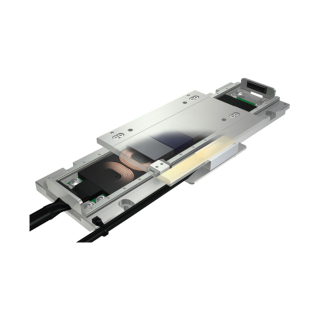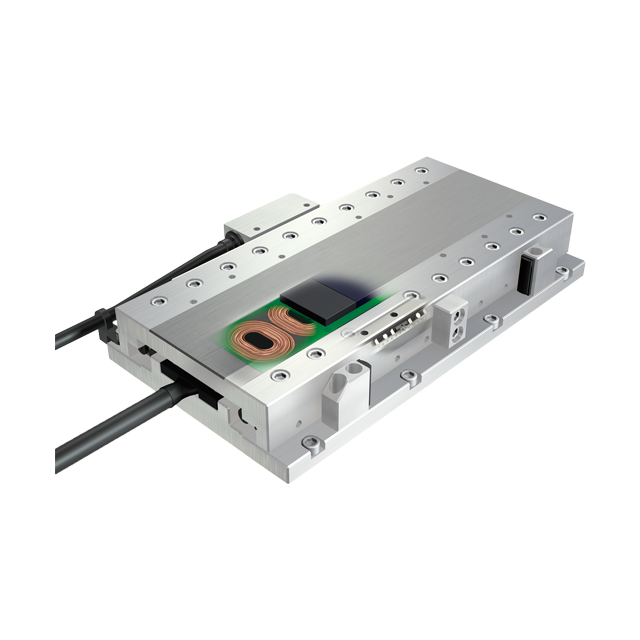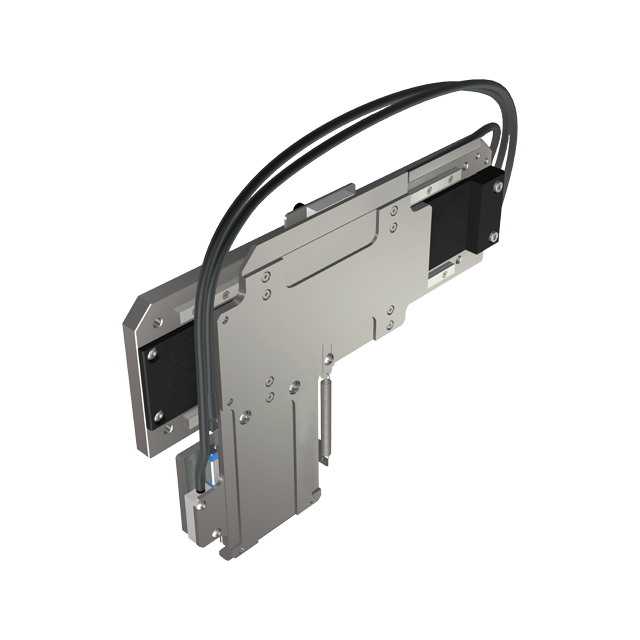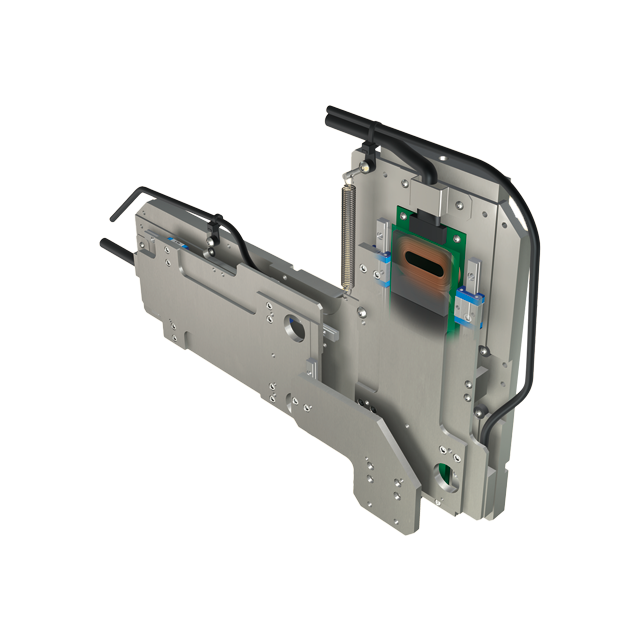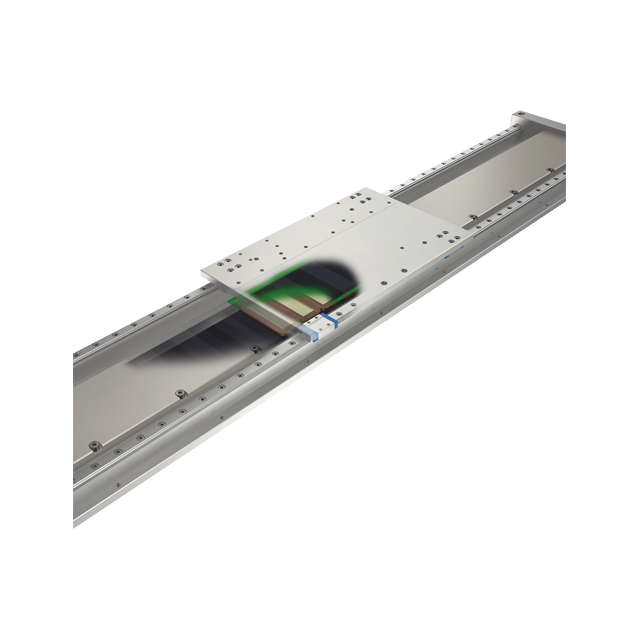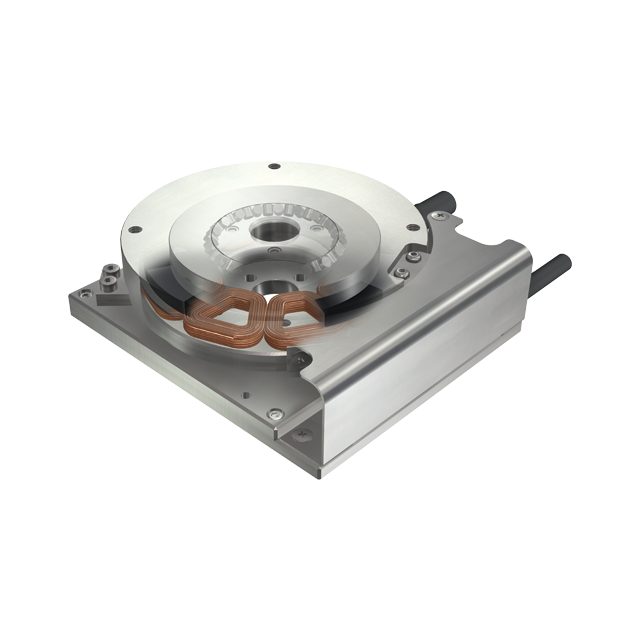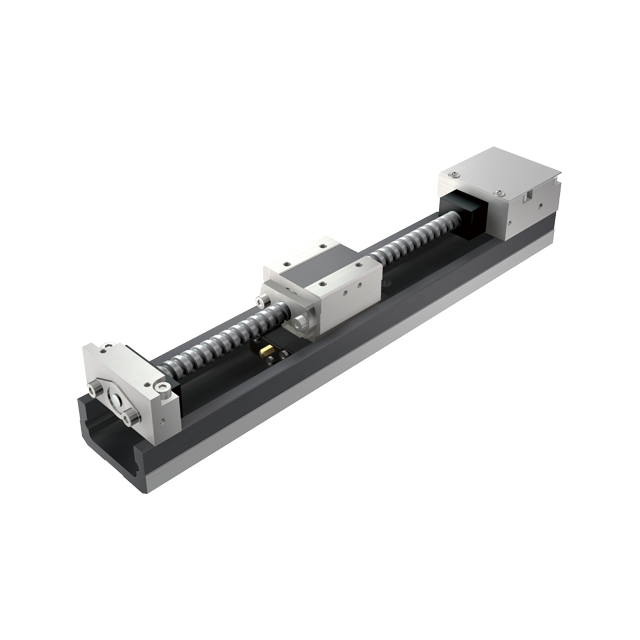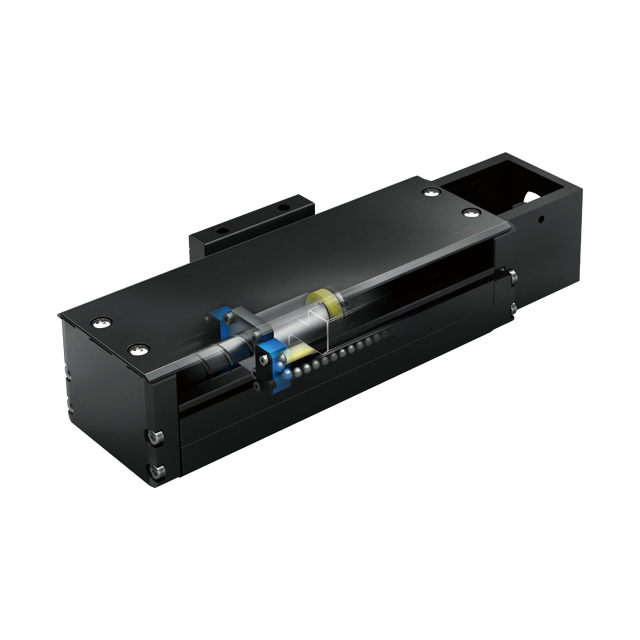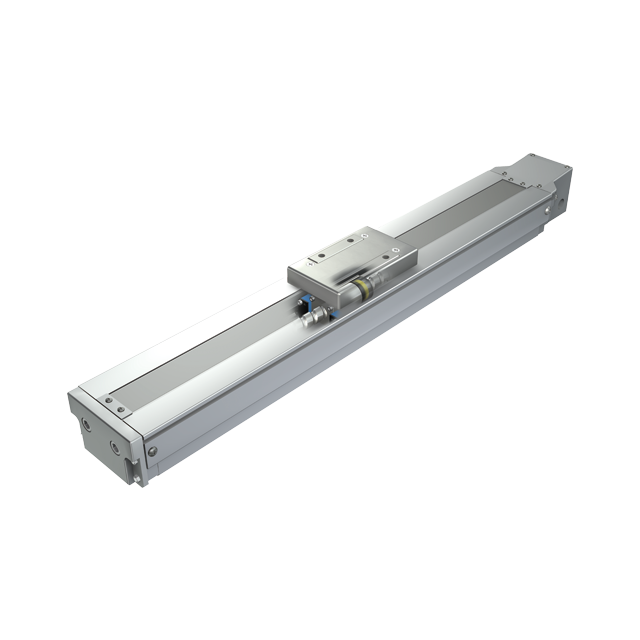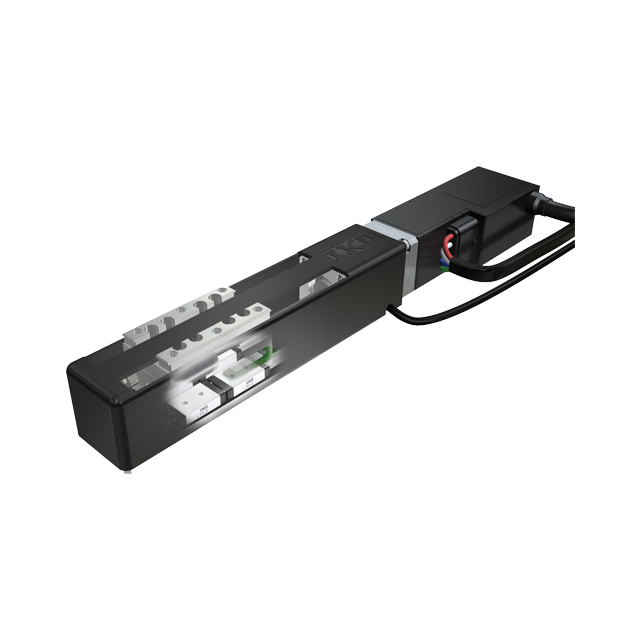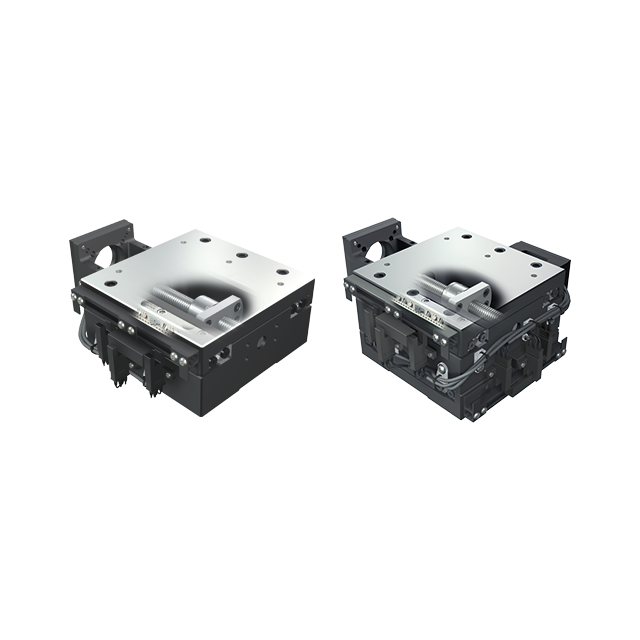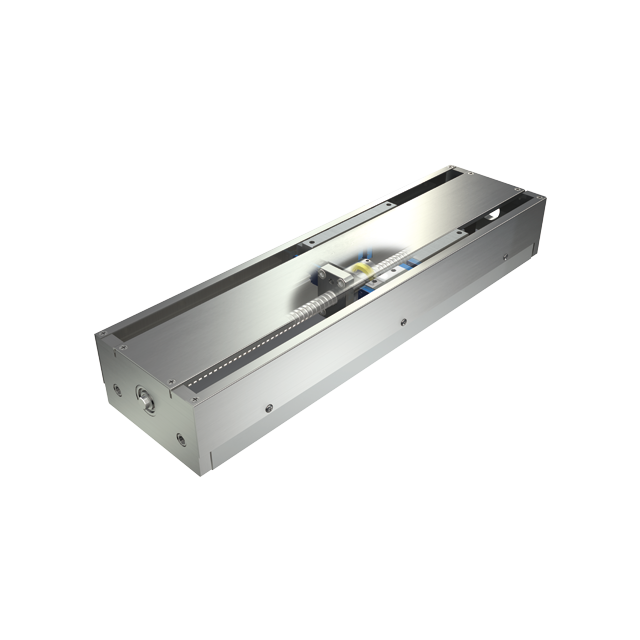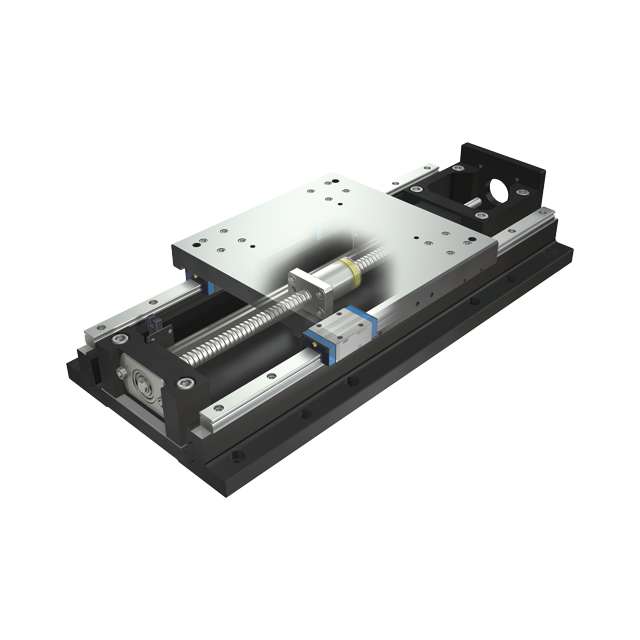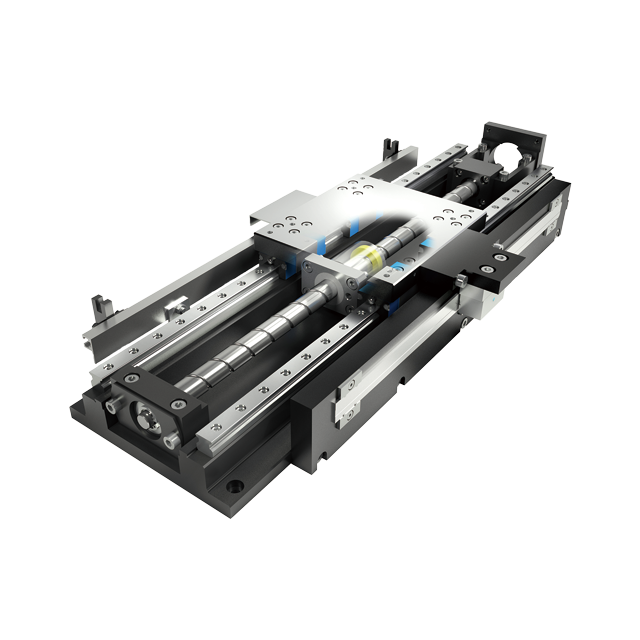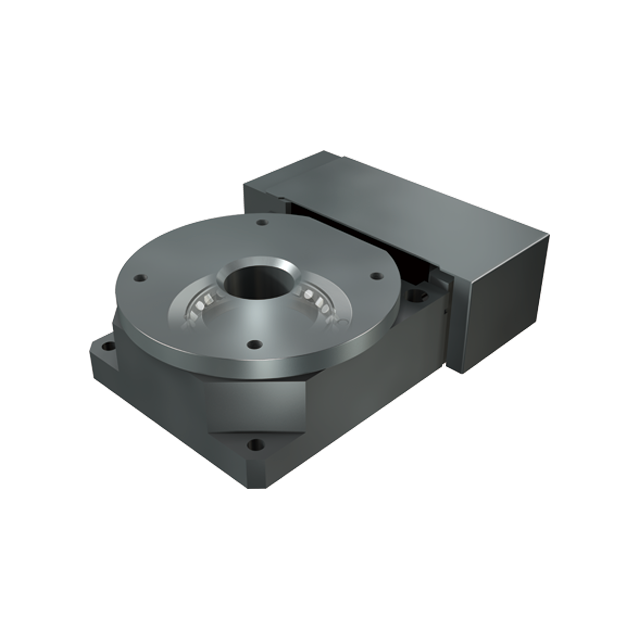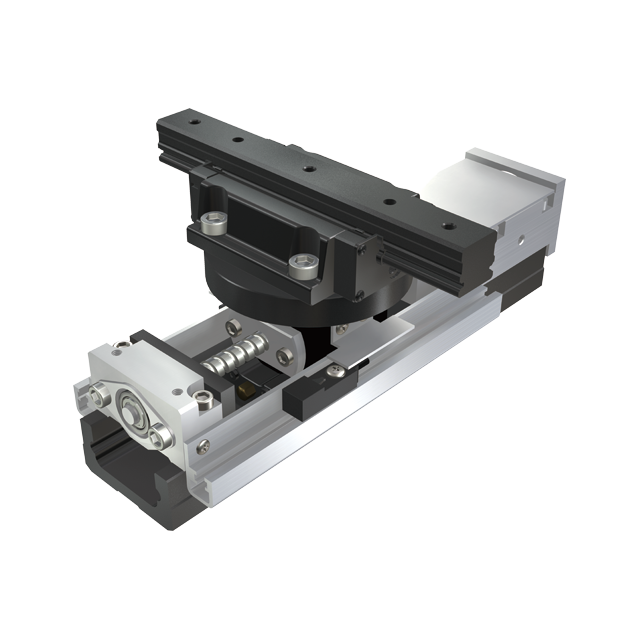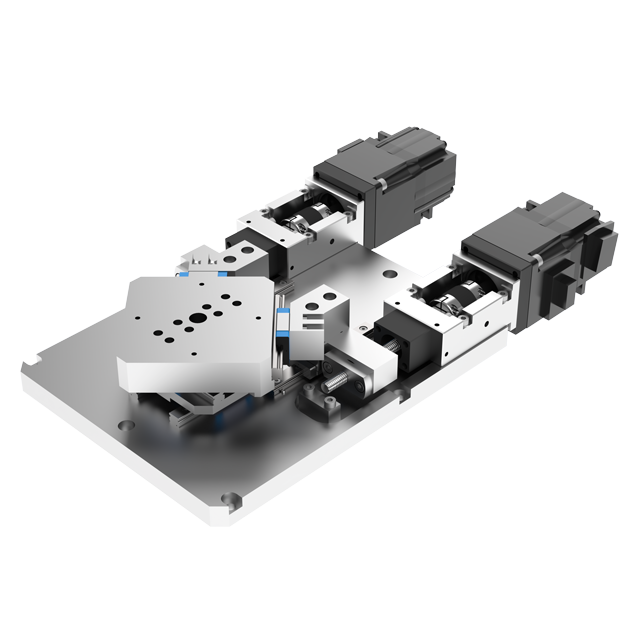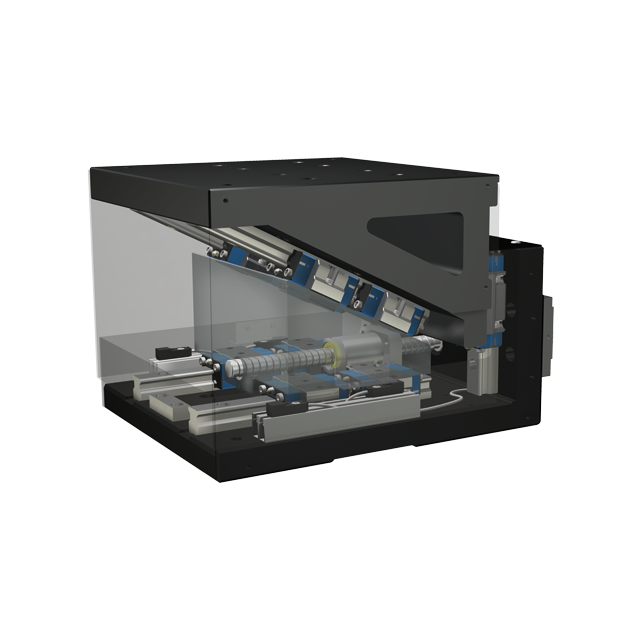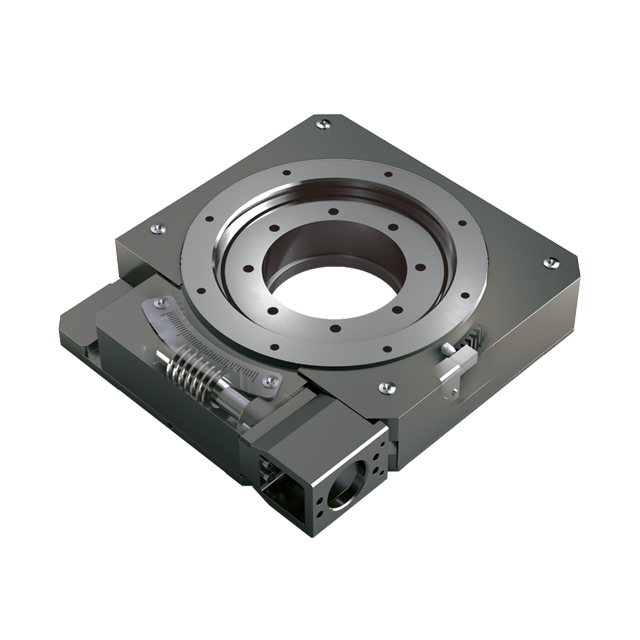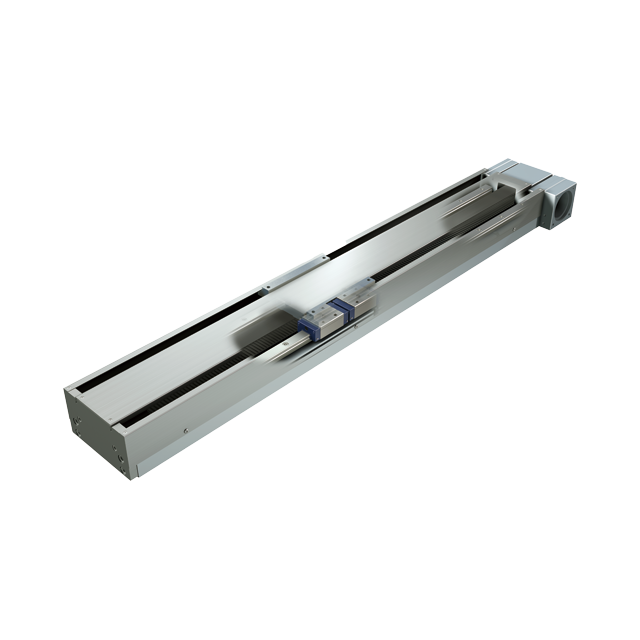A~
- absolute encoder
- An encoder with a function to detect absolute position. Since the absolute position can be known at all times, there is no need to return to the origin every time the power is turned on and off.
- AC motor
- Motor driven by AC power
- actuator
- A device that performs mechanical operations by combining a power source and mechanical parts. It is also a general term for devices that combine a motor and a drive mechanism.
- alarm signal
- A signal that is output when an abnormality (malfunction) occurs in a device.
- alignment
- adjustment to a position
- allowable load
- Maximum static load that can be applied horizontally without any negative effect on functional or performance
- amount of runout on the table top surface
- Indicates the maximum difference in the shape of the table top surface when the table is rotated once.
- A-phase (signal) output/B-phase (signal) output
- It is an incremental type output that determines whether the shaft rotates forward or reverse based on the phase difference between phase A and phase B as shown in the figure below. In the case of forward rotation (CW), phase A precedes phase B.
- attitude accuracy
- Expresses the angle at which the table tilts in the pitching and yawing directions within the stroke range.
B~
- back EMF
- Voltage that occurs in an inductive circuit due to a change in current, which acts as a force that causes the coil to continue to flow current, or a force that prevents current from flowing when it tries to flow.
- backlash
- This shows the mechanical play (lost motion) of the positioning table.
- ball screw
- A mechanical element component that circulates balls between a screw shaft and nut and converts the rotational motion of a motor, etc. into linear motion.
- Before the origin
- A point several millimeters away from the origin. If there is a position in front of the origin, positioning to the origin improves.
- bellows
- A covering that protects parts from dust, water, oil, etc.
- bridge cover
- Cover to prevent foreign objects from falling into the table
C~
- capacitor
- Electronic components that store electricity
- CCW (counter clock wise)
- Abbreviation for Counter Clock Wise. When viewed from the shaft, the motor rotates counterclockwise.
- CCW limit
- A limit sensor attached to the stroke end of the motor side. Originally, it meant a sensor that was at the stroke end on the CCW side when a right-handed ball screw was installed.
- closed loop control
- A method that constantly feeds back position and speed information flowing from the encoder to the controller for control adjustment.
- cogging
- Resistance that occurs between magnets and magnetic materials such as iron cores when the motor is moved
- controller
- A device that sends driving pattern signals to the driver. PLC.
- coreless motor
- Motor without an iron core in rotor
- coupling
- Shaft coupling. Machine element parts that connect shafts. In the case of an electric actuator, it is used to connect the motor and screw, and acts like a floating joint.
- CW (clock wise)
- "Clock Wise". Clockwise when viewed from the axis. The motor rotates in the same direction as clockwise.
- CW limit
- A limit sensor attached to the stroke end on the opposite side of the motor. Originally, it was a sensor that would be the end of the stroke on the CW side when a right-handed ball screw was installed
D~
- DC motor
- Motor driven by DC power supply
- deviation
- Deviation from standard values. In servomechanisms, it represents the difference between the target value and the current value.
- driver
- A control device for moving the motor. Sends electrical power to move the motor based on the operating pattern commanded by the controller.
- duty ratio
- The time the motor operates in one cycle
E~
- effective thrust
- The calculated value of the thrust that actually acts on the motor during operation. Values used for determining driving patterns, selecting motors, etc.
- effective torque
- The calculated value of the torque that actually acts on the motor during operation. Values used for determining driving patterns, selecting motors, etc.
- encoder
- A device that shines light on a disk with slits and rotates the disk, and uses a sensor to detect whether the light is ON or OFF and recognize the number of rotations and direction of rotation. (A device that converts the number of rotations into pulses. ) The controller detects the position and speed of the slider using signals from the encoder.
G~
- gain
- A value that adjusts the reaction (response) and deviation when the controller controls the motor. There are speed loop gain, position loop gain, etc. In general, increasing the gain improves the response and reduces the deviation, but if it is too high, it causes vibration (resonance phenomenon).
- grinding screw
- A ball screw finished by grinding. It has good dimensional accuracy and is suitable for high-precision operation.
- (electrical)ground
- Connection to a reference point such as the equipment casing or the reference wiring of electronic equipment. Or the reference point itself. Connected for noise countermeasures, electric shock prevention, etc.
H~
- hunting
- An operating condition in which the actual position oscillates around the target position.
I~
- I/O
- Input/Output. An interface used to exchange information (signals) with equipment connected to the outside of the device.
- incremental encoder
- An encoder with the function of detecting relative position. Since only relative positions can be determined, a return to origin is required each time the power is turned on and off to determine the reference position.
- inductance
- In motors, this indicates the resistance to the flow of coil current.
- inertia
- The property that when an object is not subjected to an external force, its state of motion remains unchanged (relative to the inertial frame).
- inertia
- The property that when an object is not subjected to an external force, its state of motion remains unchanged (relative to the inertial frame).
- Instantaneous maximum torque
- Torque that can be generated in a servo motor for a short period of time.
J~
- JOG operation
- An operation in which a motor, etc. is moved slightly intermittently to align the position of a machine.
L~
- lead
- The lead of a feed screw refers to the distance traveled by the motor when it makes one rotation (that is, when the feed screw rotates once).
- limit sensor
- A sensor installed at the end of the stroke to prevent the table from colliding with the mechanical stopper.
- Linear (roller) way
- IKO's linear motion guide equipment. See the section on linear motion guide equipment.
- linear encoder
- An encoder that detects straight-line distance. Used for position detection of linear motors, etc. There are optical and magnetic types.
- Linear motion guide equipment
- A positioning element component that expands the scope of use of rotating bearings with flat sliding parts. It is known by names such as linear way, linear guide, and linear slide.
- linear motor
- A motor that operates in a straight line using a magnet and coil.
- linear motor table
- Generic term for positioning tables that use a linear motor as the engine
- lost motion
- Maximum difference in values when positioning from forward direction and reverse direction
M~
- magnetic field
- A space where magnetic force acts from the N pole to the S pole
- maximum carring mass
- A guideline for the maximum mass that can be mounted on a precision positioning table when used horizontally or vertically.
- maximum load mass
- Maximum mass possible per the required acceleration
- maximum thrust
- Thrust value that can be produced instantaneously (duration is up to 1 second)
- maximum torque
- Torque value that can be produced instantly (duration is up to 1 second)
- measuring parallelism when lifting and lowering the table
- Shows the maximum difference in height at a point on the table
- measuring the squareness when lifting and lowering the table
- The perpendicularity to a square ruler when raising and lowering the table is shown as the perpendicularity when raising and lowering the table.
- mecha stopper
- A component that alleviates collisions caused by malfunctions in the positioning table. Mechanical stopper.
- mechatronics
- Technology that combines mechanically and electrically engineered components
- moment of inertia
- Represents the degree of difficulty in turning (difficulty stopping) rotational motion.
- motion network
- A network that connects host devices (controllers, PLCs, etc.) that control devices, sensors that monitor status, motors that drive devices, etc., and controls them in real time. Also called field network
- motor with core
- Motor with an iron core in the rotor
- moving coil method
- A method in which the magnet part is fixed and the coil part is driven.
- moving magnet method
- A method in which the coil part is fixed and the magnet part is driven.
N~
- nano linear
- The name of the IKO linear motor that achieves repeatable positioning accuracy at a nano-scale within the IKO Nano Linear NT linear motor series.
- NC
- Normally closed with sensor logic. B contact means that the circuit is always closed. Mainly used for limit sensors and pre-origin sensors.
- NO
- Normally open with sensor logic. Meaning of A contact, which is always open circuit. Mainly used for origin sensor.
- noise
- Extraneous electrical signals that interfere with equipment operation
O~
- open loop control
- A method of control that does not monitor the position of the rotor, etc. and does not take feedback. A typical example of this is a stepper motor, which does not compare a command value with an actual value, so even if a step-out occurs (a signal error occurs), the controller cannot correct it.
- origin
- Reference point (starting point) for positioning table movement.
- out of step
- The stepper motor is not synchronized with the input pulse signal.
- overload
- A condition in which more than permissible load is applied to the moving parts of a machine or electrical or electronic circuits.
P~
- parallelism of table motion A
- Indicates the parallelism (indicator placement) between the movement of the slide table and the plane (precision positioning table mounting surface)
- parallelism of table motion B
- Indicates the parallelism (indicator movement) between the movement of the slide table and the plane (table mounting surface)
- parallelism of the table to the mounting surface
- The height of the entire table top surface is measured based on the table mounting surface, and the maximum difference in reading is shown.
- payload
- Mass that can be carried with a certain speed or acceleration. One of the specifications of IKO's linear motor table.
- photo coupler
- An electronic component that converts electrical signals into light and transmits them.The input and output sides are electrically isolated, making it less susceptible to noise.
- PLC
- Abbreviation for programmable logic controller. Also called a sequencer. Programmable controller for controlling production facilities and equipment.
- position control
- The method for moving to the target value when the target value is a position or angle
- Positioning accuracy
- Positioning is performed sequentially in a fixed direction from the reference position, and the variation in the difference between the actual distance traveled and the target distance to be traveled at each position is determined.
- precision positioning table
- A general term for devices that have both a drive mechanism and a guide mechanism that guides the table.
- proximity sensor
- Sensor that reacts when a metal tag approaches
- pulse signal
- Signal generated by repeated power ON/OFF
R~
- radial runout amount of table inner diameter
- Indicates the maximum difference in the shape of the inner surface of the table when the table is rotated once.
- rated thrust
- Thrust that can be generated continuously.
- rated thrust characteristics
- Indication of rated thrust value at ambient temperature
- rated torque
- Torque that can be generated continuously.
- Repeatable positioning accuracy
- Repeat positioning from the same direction to an arbitrary point, measure the stopping position, and determine the variation in positional accuracy.
- resolution
- The smallest unit of physical quantity that a measuring device (encoder, etc.) can handle.
- Return to origin
- The action of returning while searching for the origin point.
- robot cable
- Electric wires used in moving parts. Cables with excellent resistance to bending, sliding, and twisting.
- rolled screw
- Ball screw finished by a rolling process. Rolling is suitable for mass production and is cost effective.
- rotary encoder
- Encoder that detects rotation angle. Used for position detection of servo motors, etc. There are optical and magnetic types.
S~
- servo motor
- A motor that has a position detector such as an encoder and has the ability to follow a target value through feedback control.
- servo off
- An uncontrolled state in a servomechanism.
- servo on
- A controlled state in a servomechanism.
- settling time
- In positioning operation, it refers to the time from when the speed command value becomes zero until it stops.
- single-phase
- Electrical power distibution system mainly used in ordinary households
- soft limit
- Limiting the operating range using software.
- speed control
- A method to keep the speed constant at the command speed
- speed ripple (speed stability)
- Deviation between specified speed and actual speed
- starting torque
- Torque that the motor produces at the moment of startup
- static stability
- Fluctuation after positioning
- stator
- Fixed and non-rotating armature
- step angle
- Angle of rotation with a single pulse signal in a stepping motor
- stepper motor
- A motor that rotates one step at a time based on a pulse signal.
- straightness
- Indicates the deviation between the linear motion of the slide table and the ideal straight line.
T~
- teaching
- Refers to a method of creating motion control programs that memorize movements, positions, etc.
- three-phase
- Three single-phase alternating currents stacked at equal intervals
- thrust characteristics
- Indicates the thrust value that can be output at the moving speed of the table
- timing belt drive
- Using a timing belt for the drive mechanism
- torque (thrust) control
- A method to keep the torque (thrust) generated from the motor constant
- torque (thrust) ripple
- Torque (thrust) fluctuation range
- turning screw
- A ball screw finished by turning (on a lathe). A ball screw with a good balance between various types of precision and cost.
W~
- worm gear
- A mechanism that combines a screw gear (worm) and a helical gear (worm wheel) that meshes with it.
Y~
- yoke
- Iron (or steel) that when combined with a magnet, reduces magnetic flux leakage and increases magnetic force, to improve performance. Pure iron with few impurities and steel with low carbon content (low carbon steel) are generally used. magnetic yoke.
Z~
- Z-phase
- This is the phase (signal) that detects the reference point of the incremental encoder, and is used to detect the home position during home return operation. Searching for the Z-phase signal that serves as a reference during home return operation is called Z-phase search.


